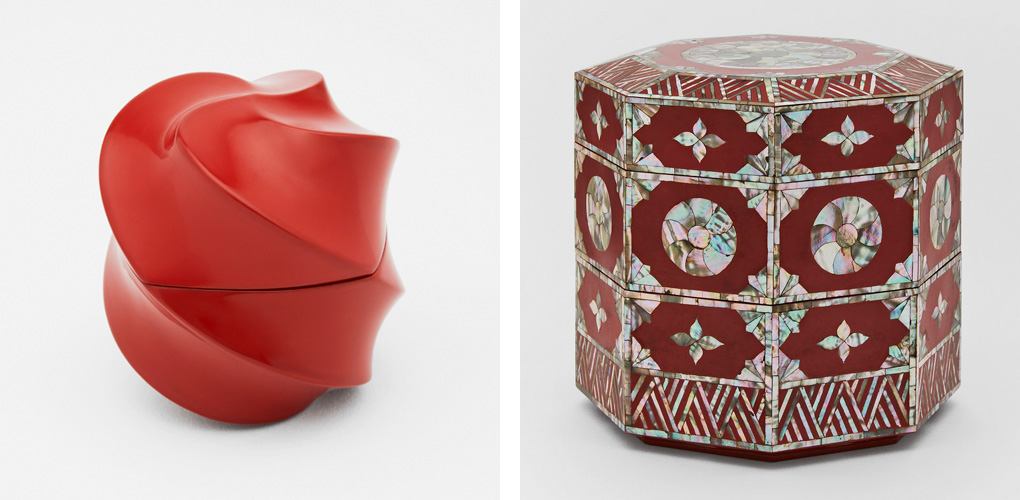Celebrated domestically and internationally for tea ceremony caddies in lacquer and mother-of-pearl inlay, as well as rather more substantial fittings such as kimono display hangers, artisan Tatsuaki Kuroda (1904-82) has finally been honored with the first Kyoto retrospective exhibition of his work.
The exhibition focuses on his formative encounters with Kyoto craft and cultural elites when he was in his 20s, and the patronage of his Kyoto clients such as the Kagizen Yoshifusa confectioners. Later in life, Kuroda was commissioned to produce a large decorative cabinet and interior-door decorations for the Seiden-Take-no-Ma (Audience Room) of the Imperial Palace. On display, too, is the "King's Throne," part of a set of furniture made for the Gotemba mountain retreat of the legendary film director Akira Kurosawa. As if further credentials were called for, Kuroda was also the first woodworker to be designated a Living National Treasure, in 1970.
Kuroda was born into a samurai family and followed in his father's later life steps to become a lacquerer. But from the end of the 1910s, he began questioning the craft's division of labor. Japanning, the adding of the lacquer to wooden utensils and furnishings fashioned by others, was in Kuroda's mind mostly thankless. The finishers and decorators were the artisans usually accorded the honors. So he began undertaking the entire lacquerware process alone — creating the wooden base, applying lacquer, adding decoration. Establishing himself as a comprehensive craftsperson, he was beginning to realize an early 20th-century desire to elevate Japanese crafts into fine arts.


















With your current subscription plan you can comment on stories. However, before writing your first comment, please create a display name in the Profile section of your subscriber account page.